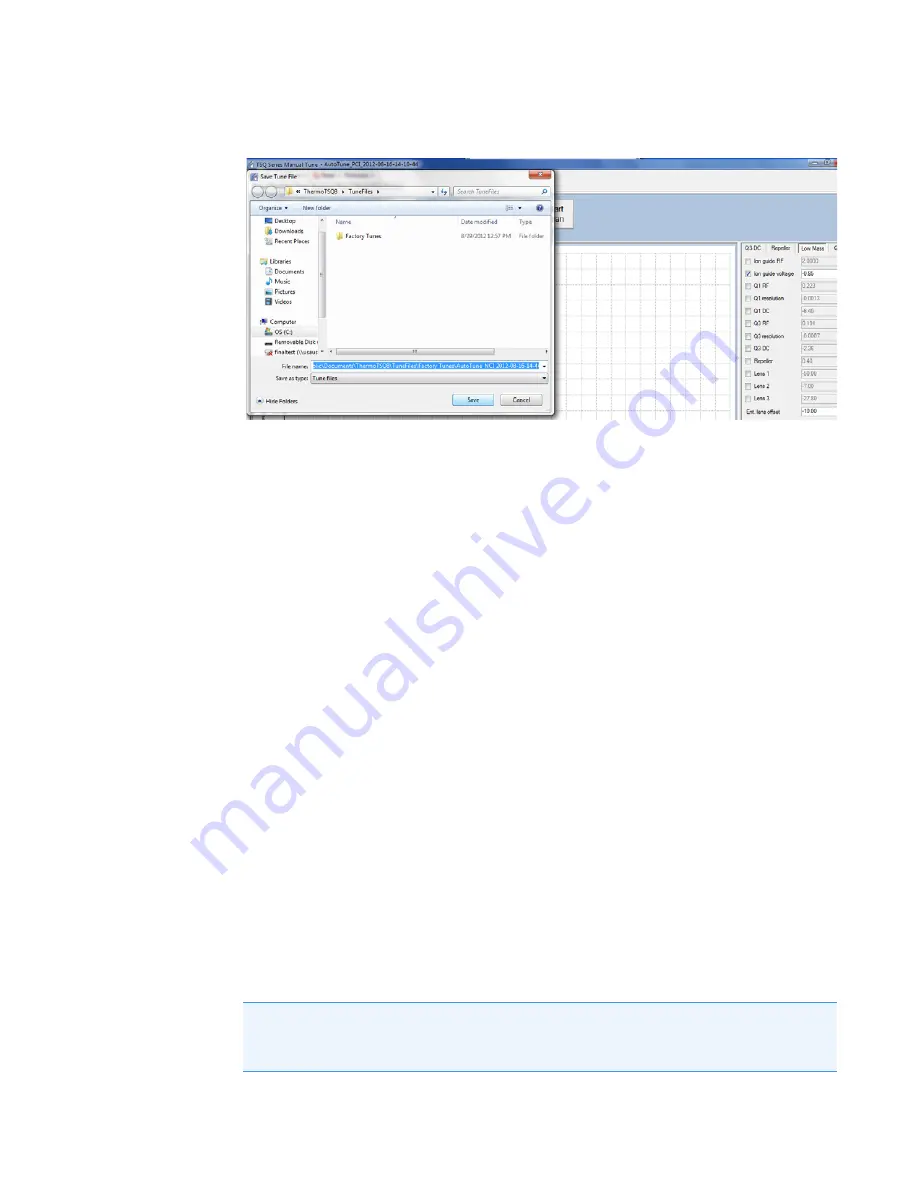
5
Optimizing Your Method
Optimizing an NCI Tune
Thermo Scientific
TSQ 8000 Evo User Guide
95
Figure 94.
Saving a New NCI Tune File
9. Click
Save
.
10. Close Manual Tune.
To optimize the CI ion volume position using methane
Ion volume placement is the most important setting for CI. Your instrument’s sensitivity is
maximized when the ion volume electron hole is properly cleaned inside and outside, but this
sensitivity rapidly decays until the hole gets an ion burn. This is normal behavior for your
instrument. Lower emission currents cause this decay to happen less rapidly.
1. Scan reagent gas ions in methane PCI in manual tune, making note of the reagent gas
intensities for ions at
m/z
29 and 41. To do this, select
Air
for the spectra or one SIM
mass 35, width 50.
2. Remove the source and rotate the ion volume in the sleeve and reinsert, repeating until
you get the highest
m/z
29 for the current flow and filament settings.
3. Once the orientation of the ion volume is optimized, if you are tuning in PCI, adjust the
methane flow so that the
m/z
41 greater than 20% of 29 at 50 μA and 70 eV. If you are
tuning in NCI, use a flow between 1 and 1.5 mL/min methane for most analytes.
4. Perform full scan NCI with the calibration gas on and optimize the repeller voltage. On
some instruments a value of 0.5 to 1 V will generate good ion flux while almost no ions
will be observed at 0 V. This is due to a possible positive offset of a few tenths of a volt on
the repeller electronics.
5. Save the tune file with the appropriate name or save the tune file to the instrument to
begin the automated tune.
Note
You may also adjust the emission current for the ionization mode and samples. The
higher emission currents often work better in NCI, and the lower emission currents often
work better in PCI but the optimal emission currents are typically between 25-100 μA.
Содержание TSQ 8000
Страница 1: ...TSQ 8000 Evo Mass Spectrometer User Guide 1R120586 0002 Revision C December 2015 ...
Страница 22: ......
Страница 148: ......






























